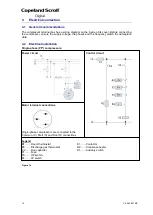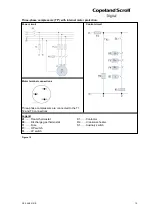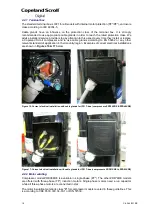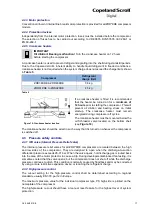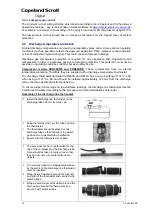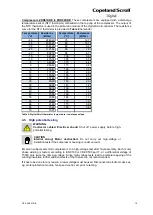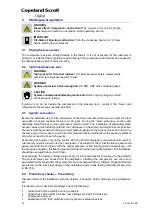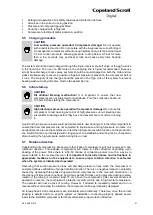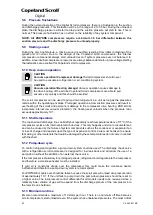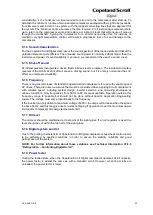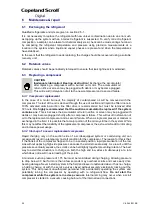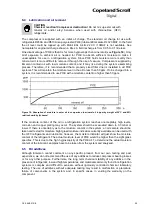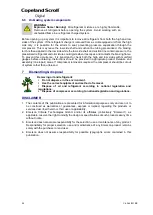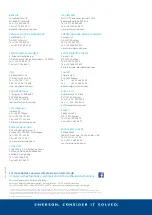
18
C6.2.44/0219/E
4.3.3 Low-pressure control
The minimum cut-out setting shall be determined according to the refrigerant and to the allowed
operation envelope
– see technical data in Select software at
.
For example, a minimum cut-out setting of 0.5 bar(g) is required for ZR compressors using R513A.
The low-pressure cut-out should have a manual reset feature for the highest level of system
protection.
4.4 Discharge temperature protection
Internal discharge temperatures can reach unacceptable values under some extreme operating
conditions (such as operation outside the approved application limits, improper control operation
or loss of refrigerant injection charge). This could cause compressor damage.
Discharge gas temperature protection is required for any application with Copeland brand
compressors in order to guarantee positive compressor protection. This protection must not be
used as an operating envelope controller but as a safety device.
Compressor models ZRD36KRE and ZRD48KRE:
These compressors have no internal
temperature protection. Therefore they are supplied with a discharge temperature thermostat.
The discharge thermostat dedicated to R450A and R513A has a cut-out setting of 130°C ± 4K
with closing at 101°C ± 8K and should be installed approximately 120 mm from the discharge
valve outlet (see assembly instructions below).
To ensure proper functioning and to avoid false readings, the discharge line thermostat must be
installed and insulated according to the procedure and recommendations hereunder.
Assembly of the discharge line thermostat
▪
Install the discharge line thermostat on the
discharge tube 120 mm from top cap.
▪
Snap the retainer clip over the tube and onto
the thermostat.
▪
The thermostat should be placed on the
discharge tube so that its body is in upward
position on a horizontal tube installation.
▪
Ensure that the thermostat is not tilted.
▪
The wire must not be in contact with the top
cap of the compressor or the discharge tube.
Care should be taken to route wires so that
they do not come into contact with sharp
objects.
▪
To avoid any impact on tripping temperature
by the ambient, the discharge line thermostat
must be insulated.
▪
Wrap thermal insulation around the pipe left
and right of the thermostat and secure it with
plastic straps.
▪
Wrap a second layer of insulation around the
first one and around the thermostat, and
secure it with plastic straps.











